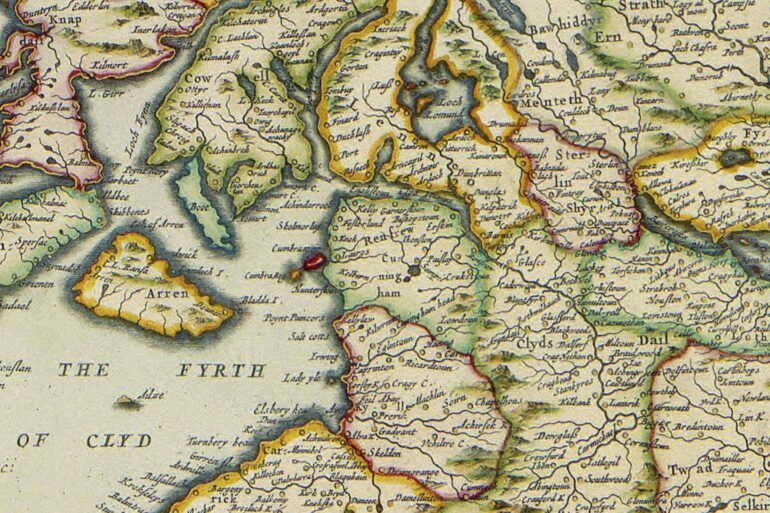When David I came to the throne of Scotland in 1124, he brought with him many nobles from England. Walter Fitz Alan appears to have been one of his most trusted friends and supporters. Walter was a knight who’s family-owned lands in Shropshire on the English/ Welsh border, but had come over from Brittany where Walters ancestors were the Stewards of Dol. David appointed Walter the First Lord High Steward of Scotland in 1136 and he based himself at Renfrew, building a Castle at Kings Inch, originally an island in the River Clyde, but now the site of Braehead Shopping Centre.
As High Steward Walter was in charge of the Kings household, responsible for collecting taxes and commanding the army. Walter was given extensive lands in Renfrewshire and Ayrshire which he divided up among his followers who were also knights and would provide service to alter or the King when called upon.
The records for the first one hundred or so years of the high Stewards are fragmentary, but we know that certain areas of Paisley and Renfrewshire were assigned to specific people by Walter and his descendants.
The lands of Arkleston were in the hands of Grimketil. Grimketil is a Scandinavian name and most likely refers to the area’s Viking forebears. It is possible he was already the owner or tenant of the lands and Walter allowed him to stay.
Ingleston, which means Englishtown, was located to the west of Arkleston. Its name was appropriate because it was given to Adam of Kent. Ralph of Kent held Ralston, which was close by. Were Adam and Ralph brothers or maybe father and son?
Houston was given to Hugh of Biggar, the lands of Duchal near Kilmacolm were given to Ralph de Lyle. Parts of Mearns were given to Roland of Mearns and Peter, son of Fulbert. Peter and his brother Robert (both sons of Fulbert) were also given Upper Pollock. Eaglesham was given to Robert Montgomery, while Cathcart was given to Reginald of Cathcart.
One of the best know followers of the Stewards was Robert de Croc. Robert de Croc was given lands in Neilston and in the Mearns, but his name survives today in Crookston, where he built his Castle and established a small town.
From these scant references it is easy to see the County of Renfrew coming under the control of the King, and the Steward with knights of both English, Scottish and probably Scandinavian origins. The use of a mix of incomers and locals probably helped keep the peace in the sheriffdom of Renfrew. The feudal tenants of the Stewards lands helped finance the high Stewards own household through payment of feudal duties, namely rent in kind – such as military service, accommodation when required and in food such as grains, meat and even beer or wine. 12th Century Renfrewshire witnessed fast-paced changes.
